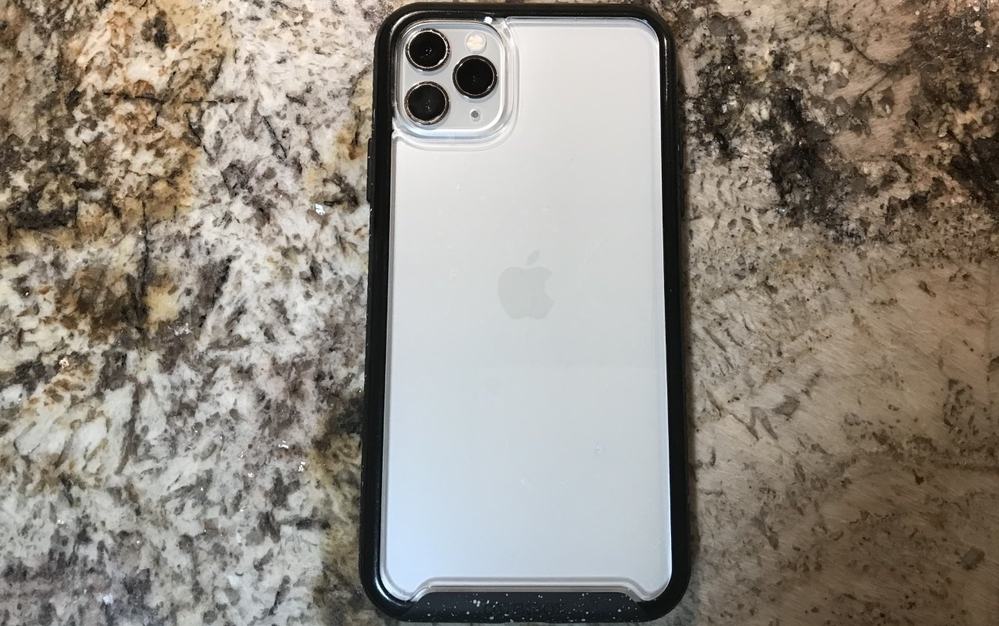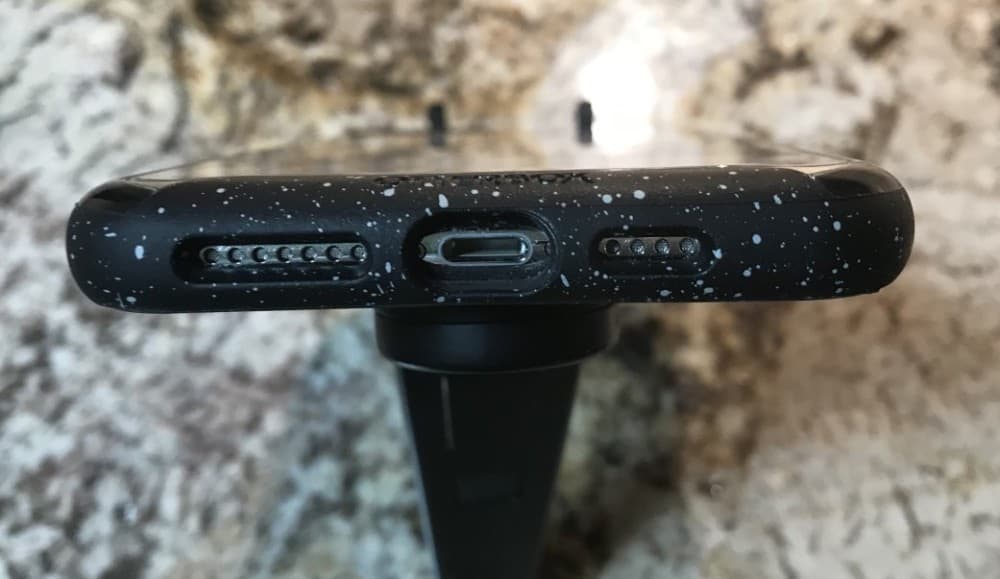As an Amazon Associate, I earn from qualifying purchases. Additionally, I earn a commission through each purchase made on Amazon, Clickbank, zZounds, Plugin Boutique, Plugin Fox, Thomann, Jam Play, and Punkademic from one of my links.
When it comes to purchasing a computer or a phone for music production – and more specifically for Garageband users – there are a few different options to keep in mind.
iMac, MacBook Pro, iPad, iPhone, and Apple, are all registered trademarks of Apple.
Among those options, I would say there are three things that are the most important, however, and those are the following:
1) RAM
2) Processor Speed
3) Storage Space.
With the aforementioned factors in mind, when it comes to music production and recording using Garageband iOS, the best choice to make would be the iPhone 11 Pro Max, with 512 GB of storage, a 2.65 GHz processor, and 4GB of RAM.
The model numbers for this phone (which you can grab from Amazon) are the following: A2161, A2218, A2220, just to make sure you’re getting the right one.
By the way, I’m always on the lookout for deals in the music industry (there’s usually something if you know where to look). Right now, there are 2 deals that stick out to me.
| Punkademic’s Comprehensive Music Theory Course (Great for Beginners) | Only $20/month with All-Access Pass Use the coupon code: “producersociety” |
| PianoForAll (Awesome Piano Course for Music Producers) | On Their Site |
Ideally, you want 16 GB of RAM, 3GHz of Processor Speed, and 4 Cores, but from what I understand, you can’t actually purchase an iPhone with specifications like this.
As I explained in my guide all about it, RAM, or Random Access Memory, is the temporary data storage space that the computer needs, to grab ahold of information for the current task at hand, or a task in the near future.
The processor speed, in layman’s terms, is how quickly the central processing unit of the computer is able to operate and process information.
It’s the number of cycles per second at which the processor works, and it’s typically measured in megahertz.
The storage space is more self-explanatory. It’s how much space there is for files.
The main reason why the best version of the latest model is the optimal choice is that it has the most processor speed, RAM, and storage space.
Moreover, the iPhone 11 Pro Max is going to be compatible with all of the latest gear, old software, and other features such as the alchemy synth.
Having an iPhone or a laptop with an insufficient amount of space and memory on it is truly a pain, and should be avoided at all costs. which is just one reason why I recommend this MacBook Pro (also from Amazon), over others.
If you only opt for the hardware that’s the cheapest, you’re going to pay for it later in terms of general frustration.

In my personal opinion, of the three factors, I mentioned above, I’d say the amount of storage space is the most important for that reason.
Frankly, if you have to wait a bit longer to get things done, it’s not a huge deal, although, admittedly, you don’t want Garageband to crash every 15 minutes either which I explored how to prevent in my other guide.
But for the most part, you’re going to get away with using Garageband to record just fine even with a slower and less powerful phone.
You really don’t want to be continuously running out of space on your unit, and having to import files and using an external hard drive to clear up space for your music.
This will get old very quickly.
On the other hand, you could purchase 500GB from the iCloud in storage each month and just use that instead.
Call me old-fashioned, but I’m not a huge fan of holding all of my files on someone else’s platform.
While the iCloud is secure, it is on someone else’s server, so if there ever is an issue with Apple or the iCloud, you’re going to lose that data.
Some might call me paranoid, but I like the idea of actually having my files and data within my possession as well.
An added perk is that the updated iPhone claims to have additional battery life as well, around four extra hours of battery life per day, which is a nice little feature to throw on top.
Bonus Tip:
As an added tip, if you put your iPhone on Airplane Mode while using Garageband away from home, you’ll be able to save at least some battery life for later.
Drawbacks of the iPhone 11 Pro Max
Additionally, it’s worth mentioning, that the newest iPhones, as you all know, don’t come with a headphone jack, which has definitely upset a lot of people.

I have the iPhone 7 Plus, and while it’s a nice little phone, I would be lying if I said I wasn’t annoyed by the lack of a proper headphone jack, (by the way, I use Etymotic’s ER4SR’s from Amazon).
If you wanted to get an iPhone with a headphone jack that’s optimal for music production, I would grab the iPhone 6s Plus on Amazon. This is the bigger version of the two, which makes using the software a bit easier.
The downside of using an older iPhone for Garageband, however, is the fact you may run into some compatibility issues with particular features, for instance, with the Alchemy Synth.
With all that said, most iPhones are going to work just fine with Garageband, even the older versions of the phone. So you don’t have to worry too much about making the “correct” purchase.
If you already own an iPhone and are asking yourself whether it would be a great idea to upgrade for better functionality, I would say no, it’s not going to be worth it.
But if you’re in the market for a new phone anyway, and you just want to make the optimal purchase, the iPhone 11 PRO Max is going to be your best option.
In other words, there are certainly particular models that are going to be better than others, but regardless, Garageband is going to work on your phone.
Other Important Things To Consider When Buying An iPhone
It’s worth mentioning that Garageband iOS comes with a lot more problems than the desktop version, which is the primary reason why I almost always use my Macbook Pro to make music, in addition to the fact that it’s much easier to have a much bigger screen, a keyboard, a mouse, or a track-pad.
A lot of Garageband iOS users have problems such as the application crashing and burning, files getting deleted, and so on and so forth.
To minimize these issues as much as possible, it’s wise to do what I mentioned above, and buy the iPhone with the most RAM, Processor Speed, and Storage.
Furthermore, a lot of Garageband iOS users complain about screen size, so this is an important thing to consider. If you’ve chosen a Pro Max iPhone, you’ll at least have an interface that’s easy to look at and use.
For instance, if you ever peruse the Garageband/r forum on Reddit, users complain about screen size and crashing all of the time.
Many of them, no doubt, are using old-school versions of Garageband on older phones with less-than-optimal specifications.
iPhone 11 or iPhone 11 PRO for Garageband?
As I mentioned, when it comes to buying hardware for music production, more is almost always better when it comes to RAM, Processor Speed, and Storage Capacity.
The regular iPhone 11 only has up to 256GB of space whereas the Pro Max has up to 512GB of space.
For that reason, the iPhone 11 Pro Max is without a doubt the best option, but unfortunately, it’s going to cost around $100 more.
Taking what I learned from buying a less than ideal MacBook Pro, it’s best to simply get the maxed-out version, rather than settling for less and wind up annoyed later that you didn’t get the best.
Conclusion
All-in-all, if you’re in the market for a new iPhone and you want the optimum specifications for music production, do as I’ve already mentioned multiple times now and get the iPhone with the highest RAM, processor speed, and storage capacity: the iPhone 11 Pro Max.
If you’re put off by the price and the lack of a headphone jack, however, grab the iPhone 6s Plus.

 Written By :
Written By :